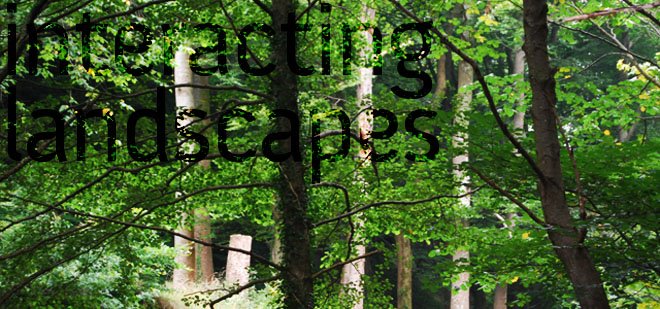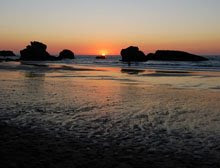 Abounded marble quarry, Vermont, Canada (http://www.edwardburtynsky.com/index.html)
Abounded marble quarry, Vermont, Canada (http://www.edwardburtynsky.com/index.html)Went to see Manufactured Landscapes at the BFI. It is the documentary about Edward Burtynsky's work from the last 10 years when he has been photographing the way industrialisation has changed the natural landscapes and the environment.
The photos above is how he started by looking at quarries in his native Canada, photographing how our life and industries are changing the landscape for good. The why he photographs it making it beautiful, until you actually start looking closer and realising what the photo is showing.
In the film he travels to China and is looking at the how industrialisation has changed the landscapes and nature in China. I like the why the documentary is made, not blaming China for the industries and the change in the landscape, but recognising our role in west as a major part in this. The industries in China are supporting our lifestyle in the west and ultimately it is our fault for the why China now are trying to cope with industries and the results and backlashes of this.
Some of the parts in the film is like another world. There are these images of what should be a green landscape and you can't see any plants or texture anywhere... It is incredible.
 The Three Gorges dam (http://www.edwardburtynsky.com/index.htm)
The Three Gorges dam (http://www.edwardburtynsky.com/index.htm)The film shows the making of the Three Gorges dam along the Yangtze river. It is the largest engineering and construction site in the world, which has caused displacement of 1.2 million people and destroyed 11 cities. What is incredible is the the people in the villages are being paid to take down their own houses and the way it is done by hand is unbelievable.
 (http://www.edwardburtynsky.com/index.htm)
(http://www.edwardburtynsky.com/index.htm) (http://www.edwardburtynsky.com/index.htm)
(http://www.edwardburtynsky.com/index.htm)But they are building the dam to cope with the huge amounts of energy that the industries take. The say that the dam will take 17 years in total to build and should be finished in 2009.
The film also shows us about recycling and ewaste. A large amount of our waste in the west end up in China where it is recycled and the process for this is mostly done by hand and especially the ewaste recycling is not good for people and it is whole images of ewaste villages and it is a terrible site of what of world might be like if we don't stop with the way we live now. It is like some kind of Scifi film! Scary stuff...
We also see photos from Shanghai and ship breaking down in Bangladesh. You come out from watching the film feeling a bit scared and ashamed of yourselves that we are the cause of those images that at first seem very beautiful - because of the why they are photographed by Edward Burtynski, then draw you in and then you are starting to see the details and start thinking and wondering. Edward Burtynski has said that he thought of making his photos political , but then thought that showing then without a messages, will cause an element of surprise and the viewer has to find out about the details in the photo himself and in the end he thought this was far more effective.
I love his photos and the message. I think it is very inspiring and also very scary. It tears you apart a bit, case we all want to keep living the way we do, but at the same time we realise that we can't.

 Abounded marble quarry, Vermont, Canada (http://www.edwardburtynsky.com/index.html)
Abounded marble quarry, Vermont, Canada (http://www.edwardburtynsky.com/index.html) The Three Gorges dam (http://www.edwardburtynsky.com/index.htm)
The Three Gorges dam (http://www.edwardburtynsky.com/index.htm) (http://www.edwardburtynsky.com/index.htm)
(http://www.edwardburtynsky.com/index.htm)












